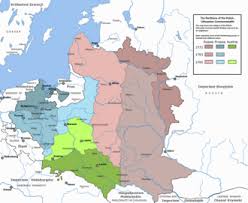Poland’s Economic Growth: A Spotlight in 2023

Introduction
Poland has emerged as one of the most dynamic economies in Europe, showing remarkable resilience and growth potential, especially in 2023. As the third-largest economy in Central and Eastern Europe, it has attracted significant attention from investors and policymakers alike. Understanding the factors behind Poland’s economic performance is crucial for stakeholders interested in the region’s market dynamics and development.
Current Economic Landscape
According to the latest data released by Statistics Poland, the country’s GDP is expected to grow by approximately 4.5% in 2023, rebounding from the challenges posed by the COVID-19 pandemic. This growth is bolstered by strong domestic consumption, an increase in private investments, and a robust export sector. The Polish government has implemented various fiscal measures to stimulate the economy, including subsidies and tax reliefs designed to support businesses and promote employment.
Key Sectors Driving Growth
The technology and manufacturing sectors are particularly notable contributors to Poland’s economic performance. The country has become a hub for technology start-ups and has attracted foreign direct investment, particularly in the automotive and tech industries, due to its skilled workforce and competitive costs. Additionally, agriculture remains a vital sector, with Poland being one of the largest agricultural producers in the EU, particularly in dairy and fruit production.
Export Dynamics
Poland’s export figures have also shown remarkable improvement, with key export products including machinery, furniture, and food products. The European Union remains Poland’s main trading partner, representing over 70% of its exports. As of 2023, the country has been working on strengthening its trade relationships beyond Europe, as evidenced by increased exports to countries in Asia and North America.
Future Outlook
Looking ahead, economists suggest that if Poland continues to foster innovation and maintain its strategic investments, it could see sustained growth over the next decade. However, challenges such as an ageing population, potential tensions with the EU on legal and political issues, and external economic pressures from global markets must be managed carefully. Poland’s response to these challenges will be critical in determining its economic trajectory.
Conclusion
Poland’s economic growth in 2023 acts as a beacon for businesses considering entry into the European market. The country has successfully navigated recent challenges to emerge stronger, demonstrating that it can maintain competitiveness in an ever-evolving landscape. For investors and entrepreneurs, understanding Poland’s multifaceted economy presents opportunities for growth and partnership. As it continues to expand, Poland could solidify its status as a key player on the European stage.









